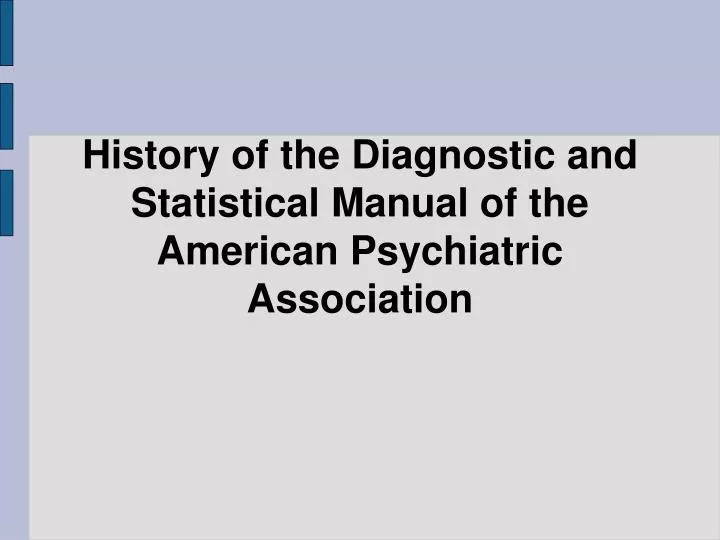American Psychiatric Association 2000 Diagnostic And Statistical Manual


The fifth edition of the diagnostic and statistical manual of mental disorders (DSM-5) introduced significant changes in the classification of autism spectrum disorders (ASD), including the abolition of the diagnostic subcategories proposed by DSM-IV-Text Revision. DSM-5 describes three levels of increasing severity of ASD. The authors report two explanatory cases with ASD (verbal boys, aged about 7 and a half years, without intellectual disability).
The American Psychiatric Association’s Diagnostic and Statistical Manual, Fifth Edition (DSM-5) provides standardized criteria to help diagnose ASD. American Psychiatric Association. Diagnostic and Statistical Manual of Mental Disorders. Washington, DC: American Psychiatric Association, 2000: 463. American Psychiatric Association. Diagnostic and Statistical Manual of Mental Disorders. Washington, DC:. The Diagnostic and Statistical Manual of Mental Disorders. Which was published in 2000. 'DSM-V The Future Manual'. American Psychiatric Association.
Kalafina Live 2010 Red Moon At Jcb Hall Download there. According to DSM-5, both cases fall into the lowest severity level of ASD. However, their neuropsychological and neurobehavioral profile varies significantly. While the first boy showed a prevalent impairment of visuoconstructional and visuoperceptual abilities, the second one presented a predominant involvement of verbal functions, with qualitative impairments in communication. A further step forward in the definition and classification of ASD, taking into account both intensity and quality of symptoms, is recommended in order to formulate a reliable prognosis, plan an individualized treatment and monitor the clinical course over time. Download Free Nissan Rb20 Engine Manual.
Introduction Autism spectrum disorders (ASD) are lifelong conditions severely impairing social skills and autonomy. According to the fifth edition of the diagnostic and statistical manual of mental disorders (DSM-5),[] ASD core features are: Persisting deficits of social communication and interaction; restricted and repetitive behaviors, interests, activities. Compared to the previous edition (DSM-IV-Text Revision),[] DSM-5 introduced significant changes.
In the diagnostic criteria, language abilities not employed in social communication have been de-emphasized. Further, the diagnostic subcategories, that is, autistic disorder, Asperger disorder, Rett disorder, childhood disintegrative disorder, and pervasive developmental disorder (PDD) not otherwise specified, have been abolished. DSM-5 describes three levels of increasing severity of ASD, from (1) (“requiring support”) to (2) (“requiring substantial support”), finally to (3) (“requiring very substantial support”).[] We report two explanatory cases affected by ASD with the same severity level, according to DSM-5, but with remarkable differences regarding the neuropsychological and neurobehavioral profile. Case 1 Male, aged 7 years 5 months. Family history was positive for schizophrenia in a maternal great-grandmother.
The maternal grandfather was a very skilled electronics technician, but he lacked empathy and had difficulties relating to others; as a child, he self-taught himself four languages. The boy was born at full term; pregnancy and delivery were uncomplicated, psychomotor development was normal. Since 18 months of age he appeared isolated, wanted things to be placed in a certain order, played along with water and looked at books for hours. He began to read letters and numbers at 20 months. His language was polished and characterized by some neologisms. He made nasty comments aloud in the presence of concerned persons. His face expressions were very serious.
Understanding of others’ feelings based on facial expressions was lacking. Eye contact was inconstant. Unusual interests for sinks, toilets, pipes, switches, lights were present. The boy was very afraid that the bulbs could explode. His behavior was often oppositional and hyperactive. He showed great ability to design projects, e.g., a new home or railway line and was frustrated by not being able to get the highest grade in maths. Applied behavior analysis (ABA) intervention was conducted.